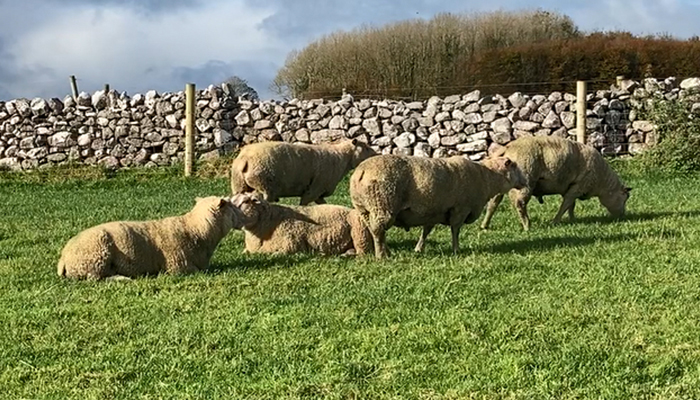02 February 2023
Part two: Making the most of your Sheep Improvement Scheme tasks

In last week’s article on the Sheep Improvement Scheme, Michael Gottstein, Head of Sheep KT, Teagasc Macroom, covered the Category A tasks. In this article, he covers what is required of farmers in terms of complying with the Category B tasks and the ram task.
Each participant must complete the ram task within the first three years of the scheme. Flocks with 151 ewes or greater must complete the ram task twice during the lifetime of the scheme.
Category B tasks. Each flock owner was required to select one Category B task:
- Pregnancy scanning and recording of results;
- Flystrike control (lowland flocks only);
- Mineral supplementation of lambs pre weaning (hill flocks only)*;
- Performance recorded and genotyped ram;
- Genotyped and sire verified ram (hill flocks only).
- This option can only be chosen for flocks who did not choose post-weaning concentrate supplementation.
Pregnancy scanning
This task requires participants to scan all ewes on the farm 70–100 days post ram turnout, record the results and to batch and manage ewes according to litter size. This is probably one of the most useful tasks, as it allows flock owners to manage late pregnancy nutrition, thereby saving money and managing body condition score in the ewe flock.
Ideally ewes should not only be grouped by litter size, but also according to lambing date and body condition. In effect, this means that single-bearing ewes are grouped with repeat twin-bearing ewes. Single-bearing ewes in sub-optimal body condition are grouped with twin-bearing ewes and twin-bearing ewes in sub-optimal body condition are grouped with triplet-bearing ewes. Participants who traditionally scan ewes in January will have difficulty completing this task in January 2024, as that will be year two of the SIS. There was the option of selecting the ram task in year one of the scheme and thus eliminating the need to scan ewes in year one. Farmers who have selected the scanning task, but have not selected the ram task in year one will be offered the opportunity to change their Category B task for the first year of the scheme.
Mineral supplementation of lambs pre weaning (hill flocks only)
This task can only be chosen in flocks that did not choose the meal feeding post weaning option as a Category A task. The purpose of this task is to address mineral deficiencies in lambs and to maximise growth rates pre weaning. Lambs on a mainly milk diet will receive the full complement of mineral and vitamins from their diet. Consequently, delaying the supplementation of suitable minerals until lambs are 10 weeks old but prior to weaning is likely to give the best results. Supplement lambs with minerals that you know are lacking on your farm. Again similar to the Category A task the mineral that is most commonly limiting on Irish sheep farms is Cobalt.
Performance recorded and genotyped ram
All flocks designated as lowland must purchase a performance recorded (i.e. Star Rated 4 or 5 star for either Replacement or Terminal Index) genotyped ram that is either type one, two or three for Scrapie Resistance. This must be carried out in the first three years of the scheme. Flocks with more than 150 ewes must repeat the ram task a second time within the five years of the scheme. Hill flocks who use lowland ram breeds as part of their breeding programme can also opt to purchase a performance recorded and genotyped ram. In the year that a participant chooses to purchase a ram, they do not need to complete their selected Category B task. The benefits of using superior rated performance recorded rams has been well established and four and five star rams on the terminal index will produce lambs that will grow faster, finish earlier and have lower lambing difficulty and better survival. On the replacement index, four and five star rams will produce females that have higher litter sizes, have better lamb survival and better maternally-derived growth rates. In short, it makes good economic sense to purchase recorded rams regardless of the requirement of this scheme.
Genotyped and sire verified hill ram
For hill flocks, there is the option of selecting a genotyped and sire verified ram of a hill breed. This task is aimed at encouraging hill ram producers to start recording parentage with a view to eventually being able to offer a performance recording programme for hill breeds. To qualify for this task, the ram will need to have been genotyped and scrapie type one, two or three and the sire of the ram will also have to have been genotyped.
Also read: Part One: Making the most of your Sheep Improvement Scheme tasks
